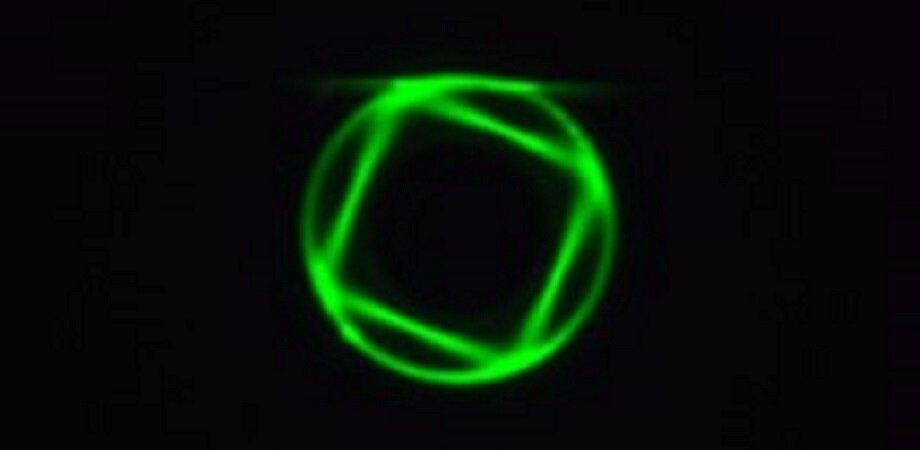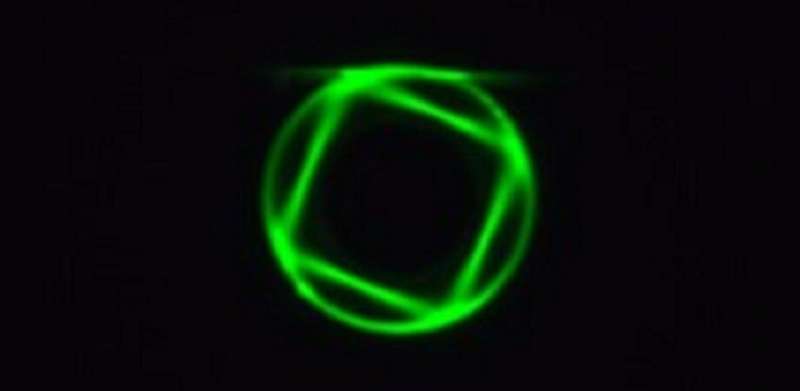

Crystalline lithium niobate (LN) is considered the “silicon of photonics” because of its outstanding optical properties, including a broad transparency window and high piezoelectric, acousto-optic, second-order nonlinear, and electro-optic coefficients, which are critical for photonic integrated circuit (PIC) applications. Recent breakthroughs in nanofabrication technology facilitate a variety of high-performance integrated photonic devices on thin-film LN, such as ultrafast electro-optic modulators, broadband optical frequency combs, and high-efficiency optical frequency convertors.
As an indispensable component for PICs, on-chip microlasers have recently been realized on a rare-earth-doped LN chip at various wavelength bands (~1550 nm and 1030 nm). To enable many applications—ranging from lidar to metrology—the LN microlasers should operate with ultranarrow linewidths and high wavelength tunability.
A high Q factor is a key parameter. According to the Schawlow–Townes theory, increasing the Q factor will lead to quadratic reduction of a microlaser linewidth. The highest Q factors demonstrated to date are those of whispering gallery mode (WGM) microcavities where light confinement is achieved by the continuous total internal reflection around the smooth circular periphery. However, the dense WGMs within the optical gain bandwidth usually give rise to multimode lasing in the microcavity. In principle, single-mode lasing can be achieved by reducing the size of the WGM microcavity, owing to the broadening of the free spectral range (FSR). Unfortunately, such a strategy inevitably leads to increased radiation loss, which is unfavorable for laser generation. So it remains a challenge to achieve single-mode lasing on a single-microdisk resonator.

To meet this challenge, researchers from Shanghai Institute of Optics and Fine Mechanics, East China Normal University, University of Victoria, Zhejiang University, and Zhejiang Lab recently demonstrated a unique single-frequency ultranarrow linewidth erbium-doped LN microdisk laser. As reported in Advanced Photonics, they achieved this through simultaneous excitation of high-Q polygon modes at both pump and laser wavelengths. They used photolithography-assisted chemomechanical etching (PLACE) to fabricate the LN microcavities integrated with microelectrodes in a controllable and cost-effective way. The microcavities provide an ultrasmooth surface, which enables ultrahigh Q factors for the cavity WGMs.
The polygon modes were coherently combined by multiple WGMs triggered by a weak perturbation from a tapered fiber. The polygon modes are sparse within the optical gain bandwidth compared to the WGM counterpart, while their Q factors remain ultrahigh (e.g., ~10 million), resulting in single frequency lasing with a linewidth as narrow as 322 Hz. Plus, the system offers real-time electro-optical tuning of the microlaser wavelength, thanks to the strong linear electro-optic coefficient of LN; the research team demonstrated a high tuning efficiency of ∼50 pm/100V.
The formation of coherent polygon modes with ultrahigh Q factors ensures the realization of single-mode narrow-linewidth microlasers in single LN microdisks, which has significant implications for miniaturized optical systems that must incorporate highly coherent laser sources. Further exploration of the strong piezoelectric, acousto-optic, and second order nonlinear properties of the LN substrate promises to advance the performance and functionality of the single-mode microdisk laser, to bypass the need for heterogeneous integrations.
Mode control for square microresonator lasers suitable for integration
Jintian Lin et al, Electro-optic tuning of a single-frequency ultranarrow linewidth microdisk laser, Advanced Photonics (2022). DOI: 10.1117/1.AP.4.3.036001
Provided by
SPIE–International Society for Optics and Photonics
Citation:
Tunable single-mode lasing on a high-Q resonator (2022, July 20)
retrieved 20 July 2022
from https://phys.org/news/2022-07-tunable-single-mode-lasing-high-q-resonator.html
This document is subject to copyright. Apart from any fair dealing for the purpose of private study or research, no
part may be reproduced without the written permission. The content is provided for information purposes only.